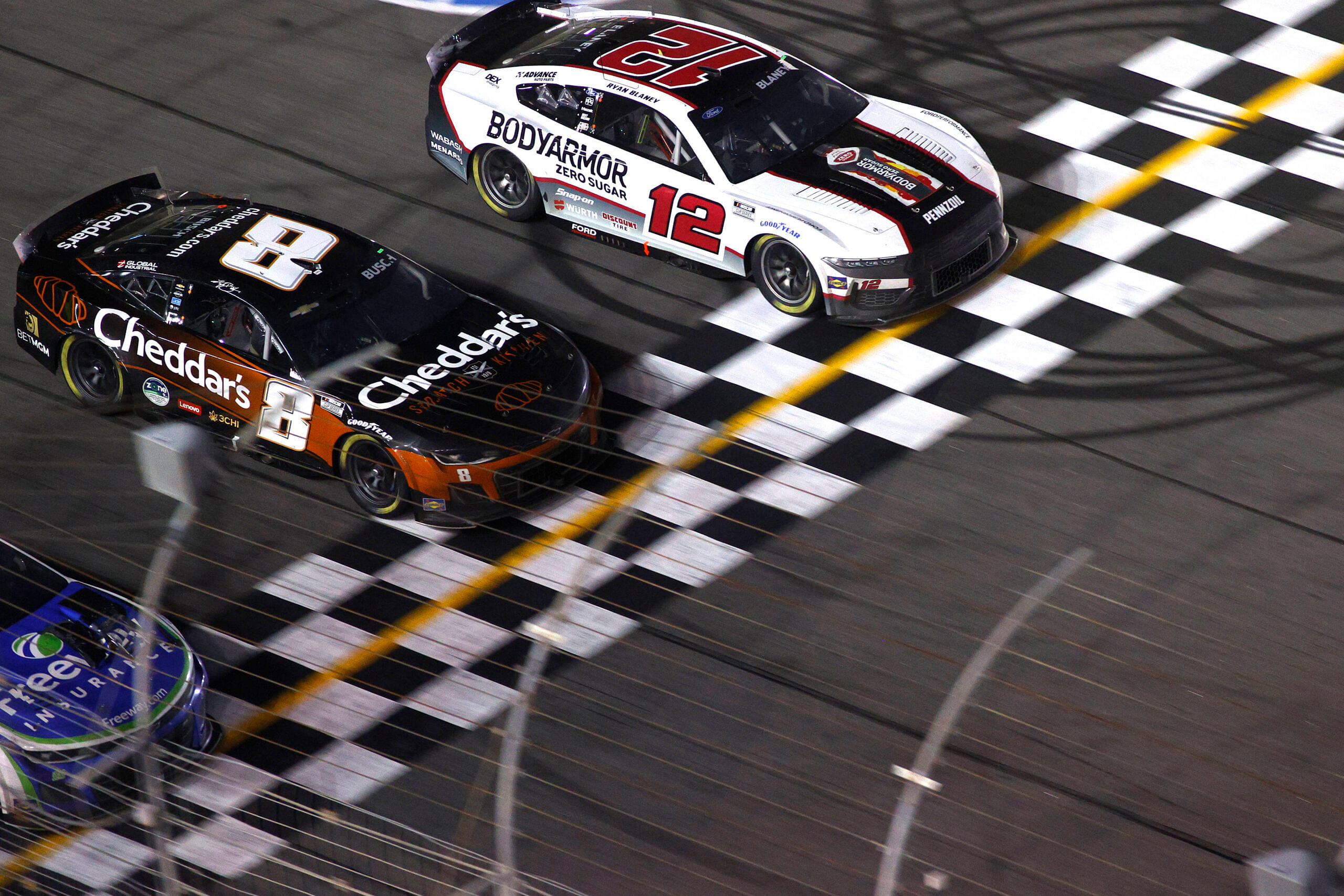Daniel Suarez’s win over Ryan Blaney in last weekend’s Cup race at Atlanta presented one of the rarest occurrences in motorsports. The Trackhouse Racing star and the defending champion were separated by less than a thousandth of a second (0.003 seconds, precisely) when they crossed the checkered flag in Atlanta. With the 3rd narrowest finish in NASCAR history still fresh in memory, here’s how officials determine the winner in such a photo finish.
Advertisement
The keen eye at any NASCAR track could spot two high-speed cameras located on the pit road, focusing on the start/finish line. One of these cameras acts as a backup in case the other malfunctions or its view is blocked. They can sometimes be found atop the garage or the infield suites depending on the track. It is with the help of these devices that extremely close finishes are dissected.
Though the cameras are capable of capturing photos at a speed of 3000 to 20,000 frames per second, they settle for a speed of around 6000 to 8000 frames per second. They are motion-sensitive and capture any object that is moving through the checkered flag. Based on the digital red line that is used to highlight the leading edge of the start/finish line, the captured photos are stitched together to form a still image.
Who decides the race winner in the case of a photo finish?
NASCAR’s broadcast compound is home to the timing and scoring technology center truck. In such instances as the one in Atlanta, the truck can immediately call for the photos to be brought up and decide the winner. The officials do so not only to decide the race winner but the stage leaders, lap leaders, and other finishing positions as well. Those in the officials’ booth are let in on the decision-making process too.
Considering the sensitive purpose of the cameras, they are usually kept separate from all the other equipment that NASCAR carries to race tracks across the country. The devices are similar to the ones used in sports such as the Olympics. In the rarest of circumstances that the cameras aren’t able to make a difference between the timings of two or more leading drivers, the one who led the most laps during the race is declared the winner.
If that doesn’t break the tie, the driver who led the most laps in second is given the honor, and so on. With the 2024 Pennzoil 400 a mere number of hours away, hopes are that the cameras will come to be of use yet again and provide for a thrilling race weekend in Vegas.


